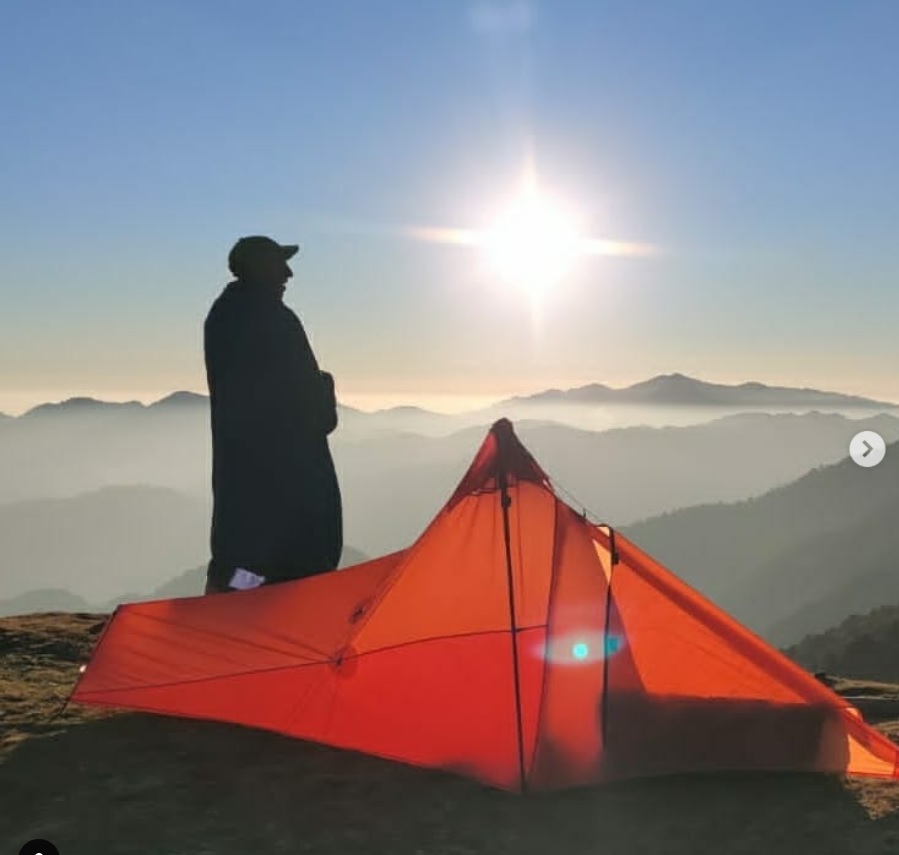
In this post I present an overview of the extensive mapping efforts done in the larger Kullu region and pending explorations. This encompasses the Kullu, Parvathy, Lug, Barot valleys and the Great Himalayan National Park. We review the topography, major mountain passes, extensive hiking network and scope for further discovery.
In recent years both myself and @creedaz have undertaken significant exploration efforts to map 100+ new hiking routes in this region in Open Street Maps (OSM). Once mapped in OSM routes appear on most web and mobile based mapping apps used by the intl. outdoor community. Illustrations below are generated using QGIS using OSM data. The same can be viewed on the mobile / OSMAnd.
Geography
The larger Kullu region discussed here encompasses various well known valleys:
- Kullu valley defined by the Beas river draining the Pir Panjal in the North and flowing down South through Manali and Kullu and turning West to Mandi
- Lug valley or Sarwari Khad, a Western tributary of Beas joining near Kullu
- Parvathy valley includes the Parvathy and Malana Nala rivers draining the high ranges of the Kheerganga National Park in the East and joining the Beas near Bunthar
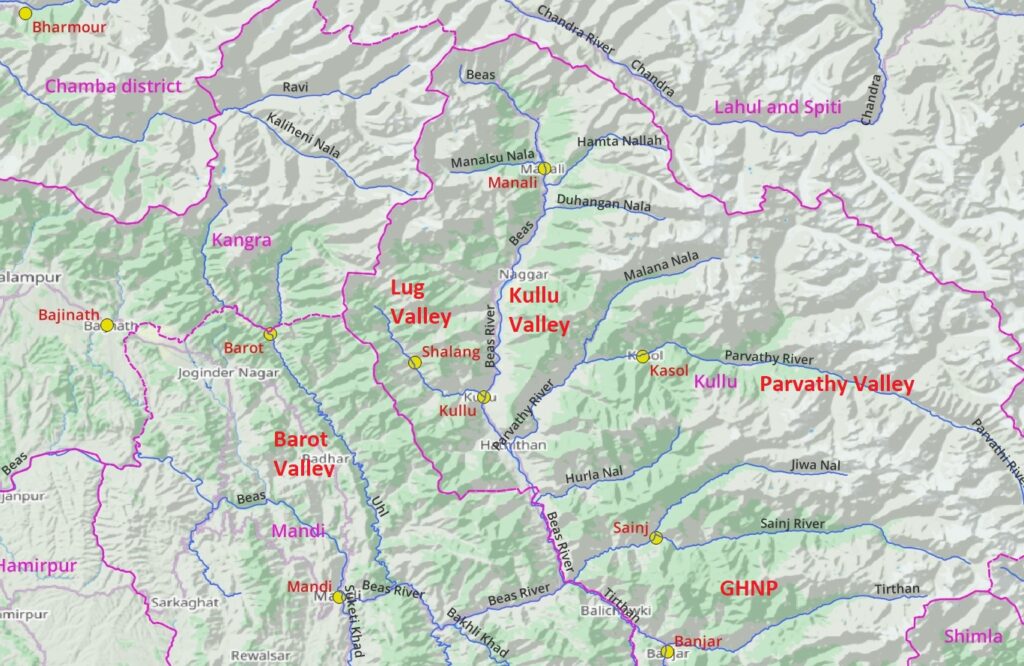
- GHNP – Great Himalayan National Park encompasses the Jiwa Nala, Sainj and Tirthan rivers in the East and joining the Beas river near Larji
- Barot valley or Uhl river draining the Eastern Dhauladhar range in the North and flowing South joining the Beas near Mandi
The Kullu, Lug, Parvathy valleys and GHNP are located in Kullu district bordered on the North+East (Pir Panjal range) by Lahaul & Spiti, Northwest (Dhauladhar range) by Kangra, Southwest by Mandi and Southeast by Shimla district. The Barot valley originates in Kangra (Dhauladhar range) and flows through Mandi district. Below an overview of the National Parks (purple) and Wildlife Sanctuaries (pink) in the larger Kullu region
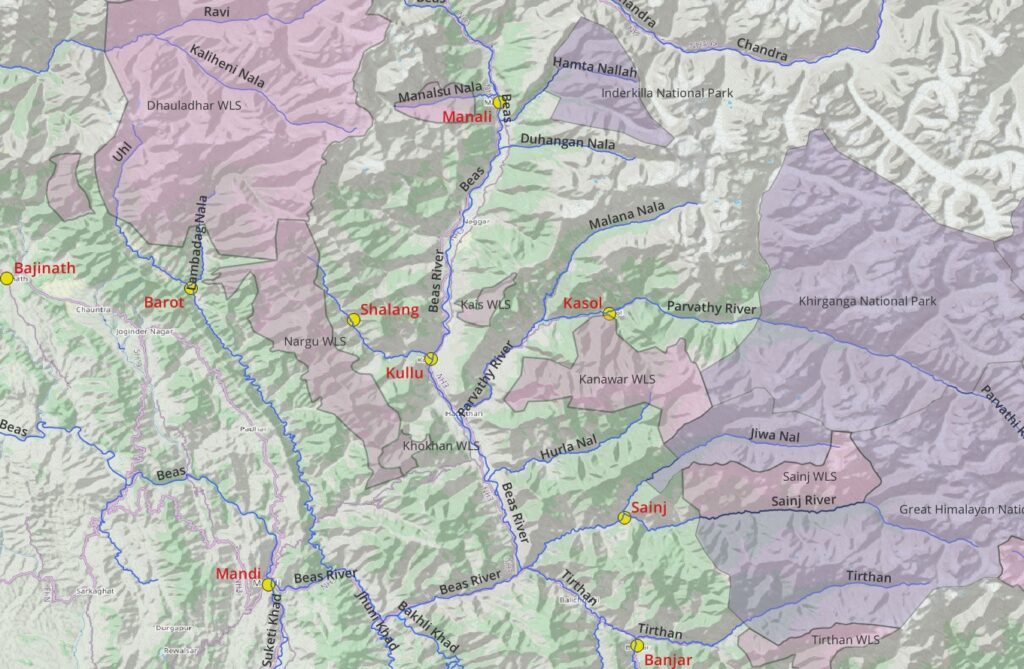
- National Parks: GHNP, Kheerganga, Inderkilla
- WLS: Sainj, Tirthan, Kanawar, Khokhan, Nargu, Dhauladhar, Manali
Mountain passes
A popular target for hikers are mountain passes – gateways across high ranges between adjacent valleys. Passes offering stunning views on the surrounding valleys and high ranges. Passes are located at different altitudes and therefore accessible during different seasons, higher passes restricted by winter snow. E.g. 2500-m in winter (Jan-Feb), 3000+m in spring (Mar-Apr), 4000+m in early summer (Jun-July) and higher in late summer (Aug-Sep). Below map shows many passes in the Kullu region with some of the more popular / important ones between the main valleys encircled:
- Hampta pass – connects Kullu valley (Hampta Nalla) to Lahaul & Spiti (Chandra river)
- Sara Umga La – connects Parvathy valley to L&S (Chandra river)
- Chanderkhani – connects Kullu valley (Naggar) to Parvathy valley (Malana)
- Sar pass – popular pass connecting Kasol to Pulga in Parvathy valley
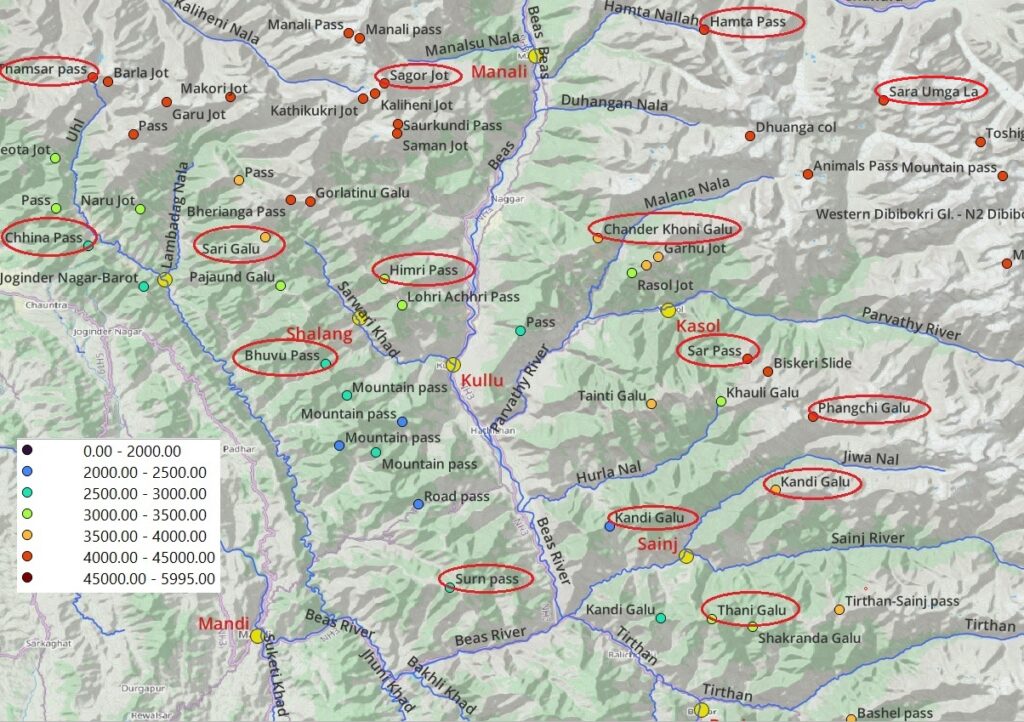
- Phangchi Galu – remote pass connecting Parvathy valley (Pulga) to GHNP (Jiwa Nala)
- Kandi Galu connects the Hurla Nala / Jiwa Nala to Sainj river
- Thani Galu (and many other passes in same range) connect Sainj and Tirthan valleys
- Sagor Jot (popularly known as Kaliheni pass) connect Kullu valley with Bara Bhanghal (Ravi river)
- Thamsar pass connects Bara Bhanghal with Barot valley (Uhl river)
- Chinna pass connects Kangra plains (Joginder Nagar) with Barot valley
- Sari / Bhuvu connect Barot (Uhl) with Lug valleys (Sarwari Khad river)
- Surn (and many other passes) connect Barot with Kullu valley
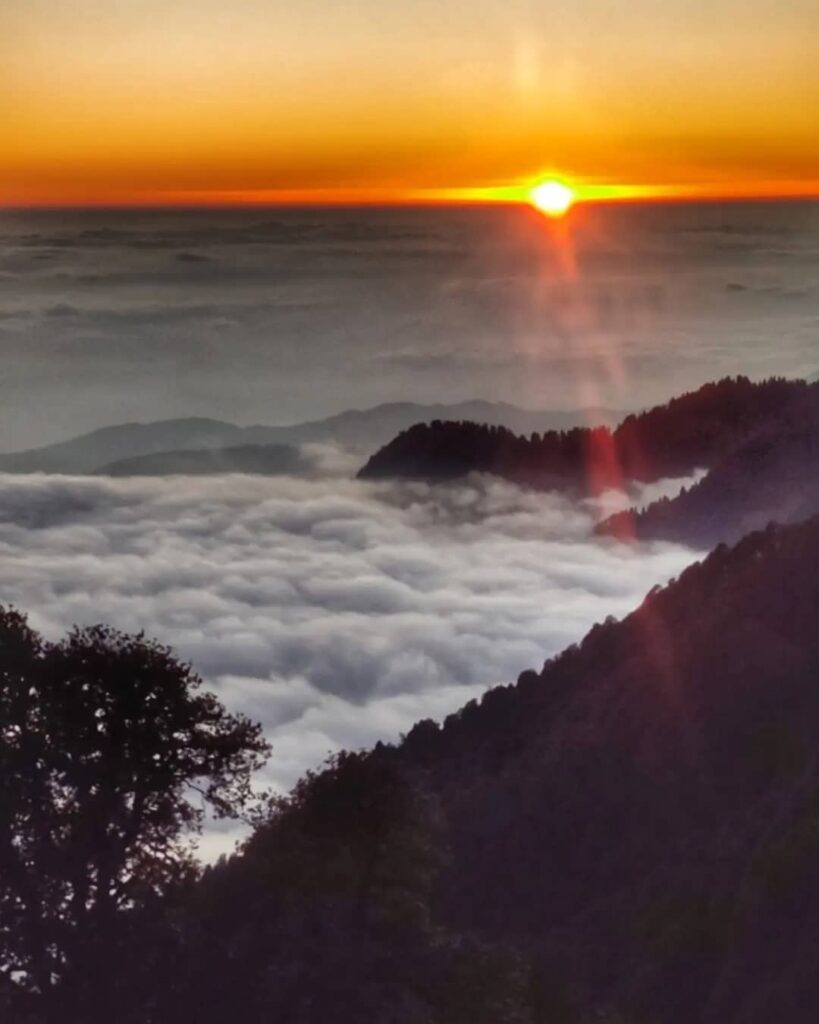
More info on most of the above passes can be found by searching on my blog ultrajourneys.org.
Hiking Routes
Many beautiful hiking routes connect adjacent valleys through above mountain passes (and many others inside valleys) and have been explored, GPS recorded and accurately mapped in OSM. As a result less experienced hikers can now easily hike these accurate routes through offline OSM maps on mobile (GPS). 100+ hiking routes in the Kullu region have been mapped so far and can be comprehensible viewed in Waymarked Hiking Trails both on web browser and mobile / OSMAnd (Map Source: Waymarked Hiking).
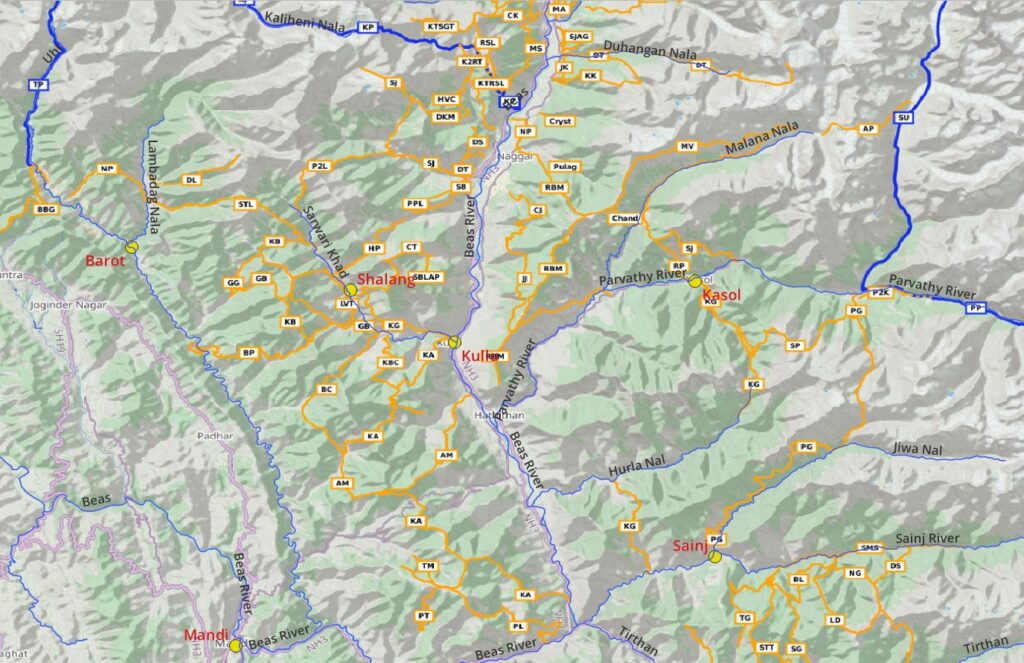
Exploration
Even though many hiking routes have been mapped in the larger Kullu region there’s tremendous scope for further exploration. Click on the map below to view more than 50 routes (yellow dots) which are yet to be explored / GPS recorded / mapped into Open Street Maps. Download the GPX file over here to view in any mobile mapping app and start exploring.
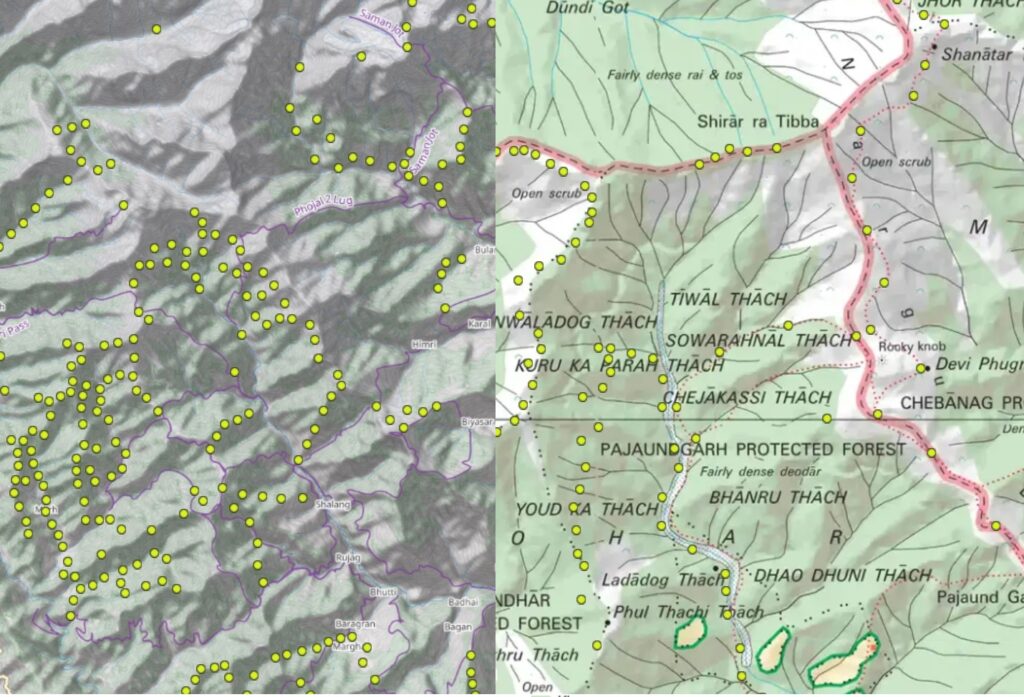
Two major sources have been used to identify these potential routes for exploration. One source are publicly available hires satellite maps (Google Earth, Microsoft Bing, ESRI…) on which you can zoom in and spot individual trails and remote settlements where the vegetation (forest cover) is less. Human made trails are usually easily distinguishable from natural features as straight / continuous lines following contours (gradual steepness) and clear contrast (usage, stepped on soil) in the surrounding landscape.
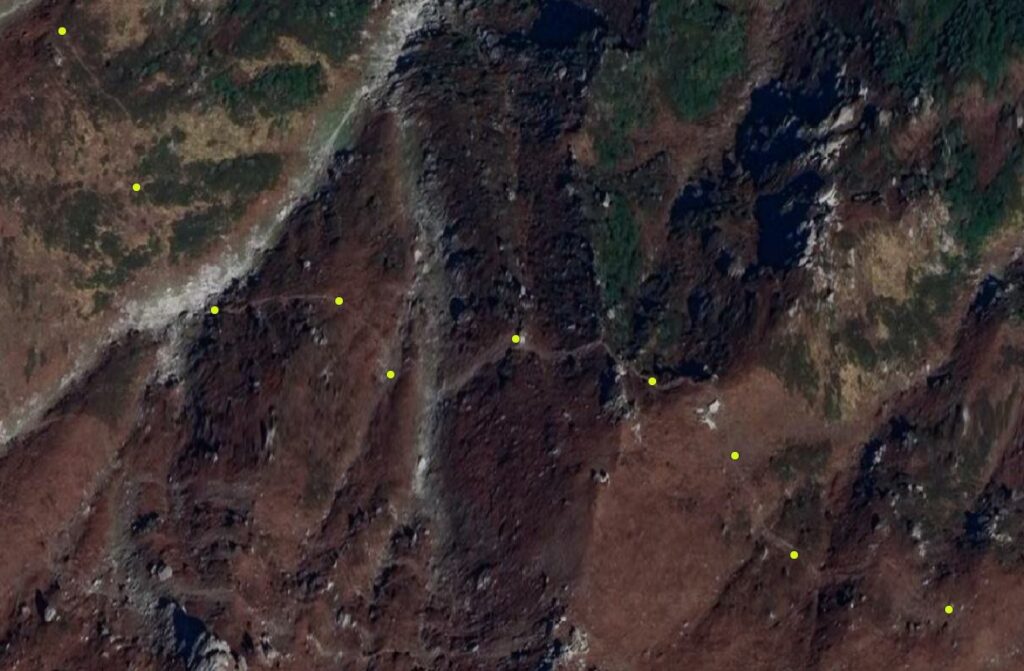
Load the above GPX file in OSMAnd (Map Source: Microsoft Earth) to discover many yet unexplored trails on a hires satellite map. Zoom in at sufficient low scale to bring out individual terrain details.
A second source which recently became publicly available are Survey of India maps which offer some of the most detailed available maps for the Himalayas. Survey maps include trails (red dotted) and paths (red dashed) between remote hamlets (red squares). They show forest (green), scrub (white) and cultivated land (yellow).
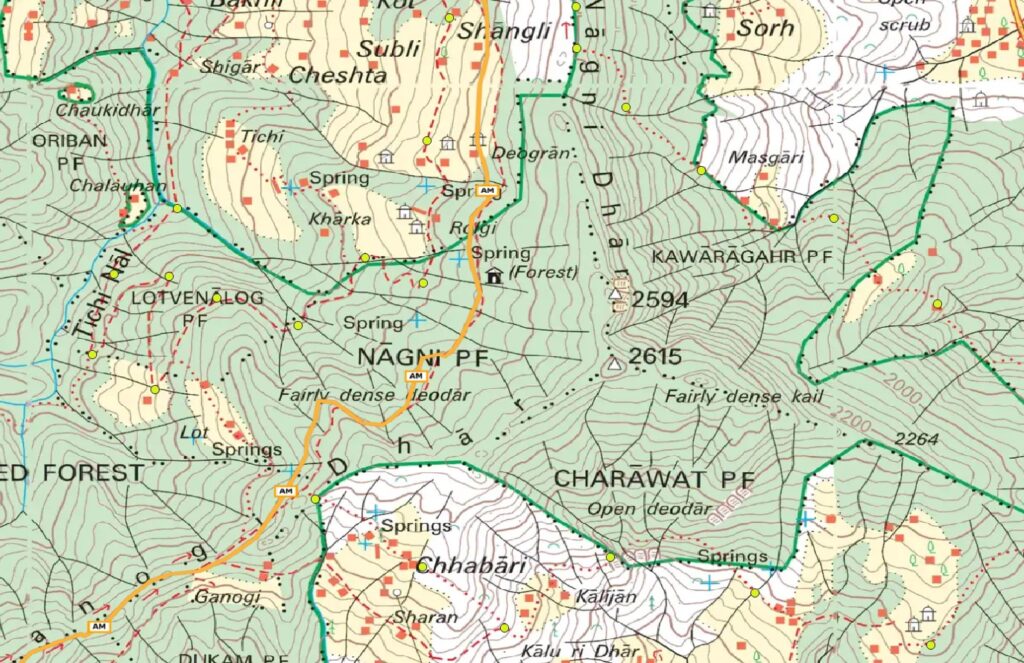
Survey maps can be viewed on the web as well as on mobile / OSMAnd (Map Source: https://www.runningreality.org/lib/map/tiles/8/136/97.webp). Load the above GPX file in OSMAnd to view some yet to be explored Survey map trails.
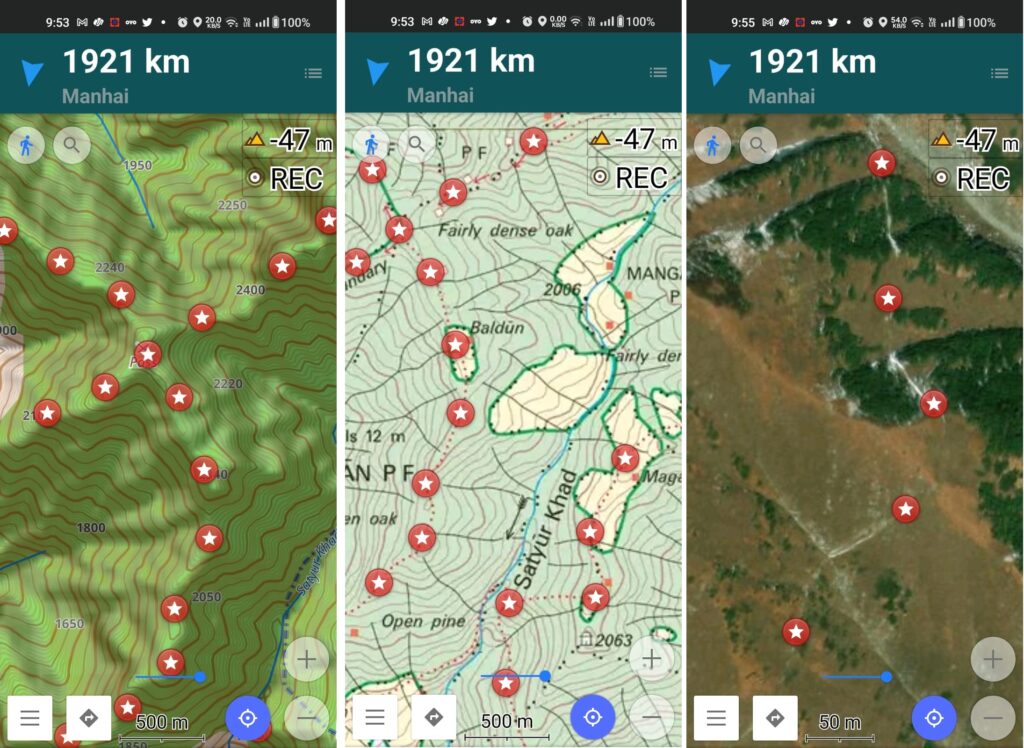
Settlements
Equally valuable as potential trails are remote settlements which provide the alpine hiker with guidance, food supply, recharge of electronics and safe night halt. Recently I mapped around 400 yet unmapped villages (larger, red), hamlets (medium, yellow) and dwellings (small, green) in the larger Kullu region in Open Street Maps which provide useful pit-stops for hiker while exploring longer multi-day routes. Human settlements appear automatically in any OSM viewer as you zoom into lower scales.
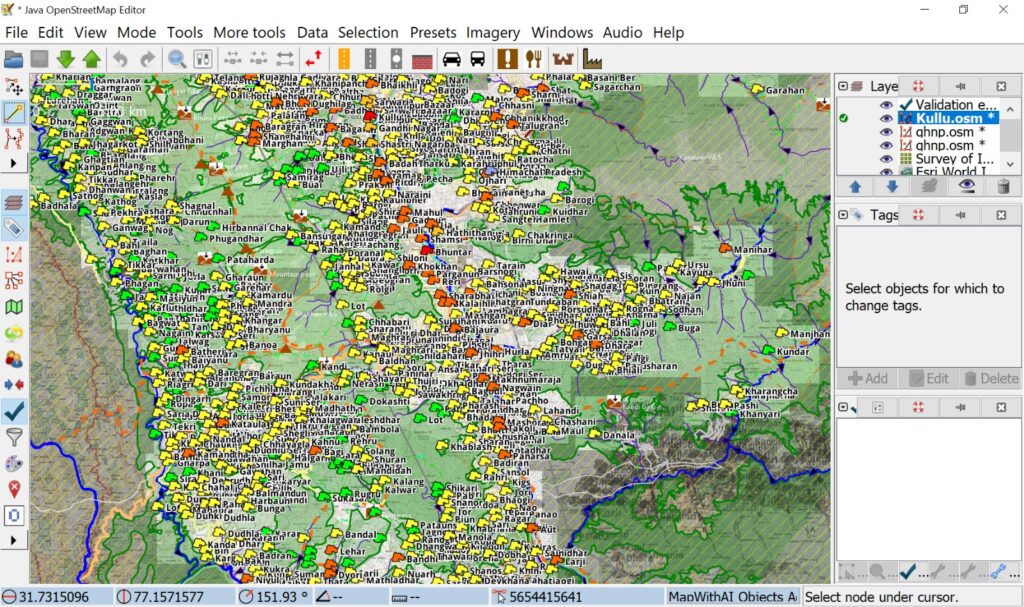
Kullu Regions
Let’s take a closer look below at 55 pending explorations in various regions within the larger Kullu region:
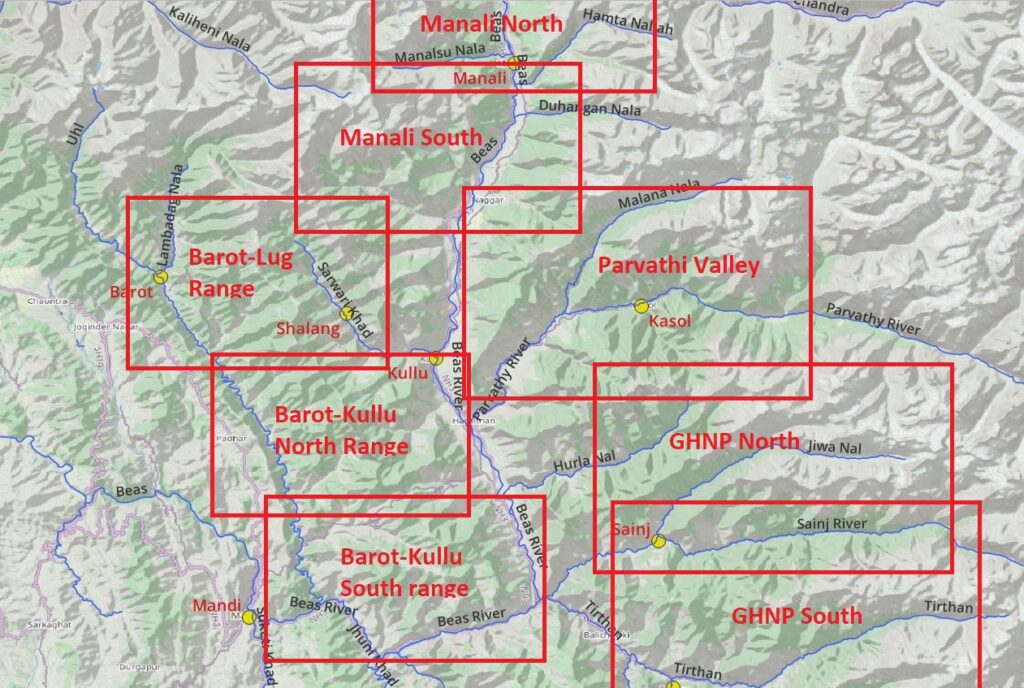
- Manali North
- Manali South
- Parvathi Valley
- GHNP (Jiwa Nala, Sainj)
- GHNP (Sainj, Tirthan)
- Barot-Kullu range (South of Kandi pass)
- Barot-Kull range (North of Kandi pass)
- Barot-Lug range
Manali North
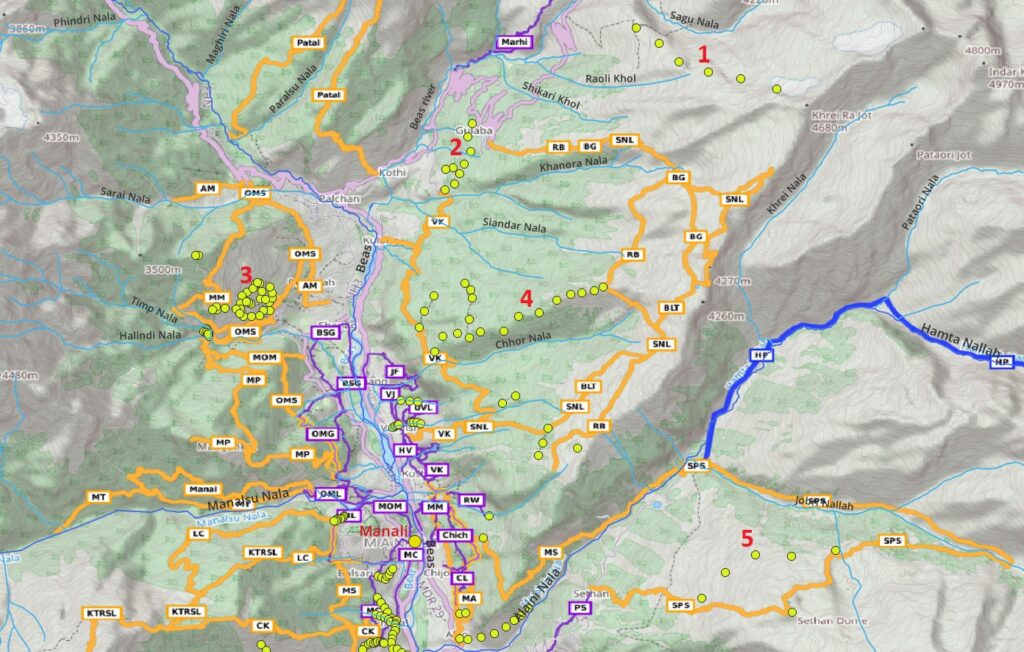
- 1 – climbing up from the Rothang higwhay to the glacier below Khrei Raj Jot 4680m (Survey)
- 2 – connecting Gulaba to Kothi-Vashist traverse (Survey)
- 3 – various trails in the meadows above Majhach (trails spotted on Sat maps)
- 4 – ridge trail connecting Gulaba-Brighu and Vashisth-Koti traverse (hiked earlier)
- 5 – horizontal traverse around the Sethan dome (Survey)
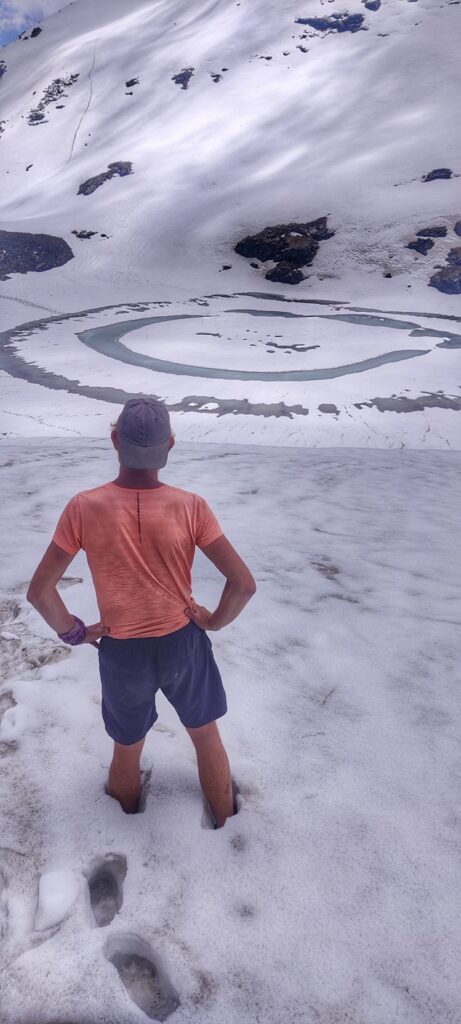
Manali South
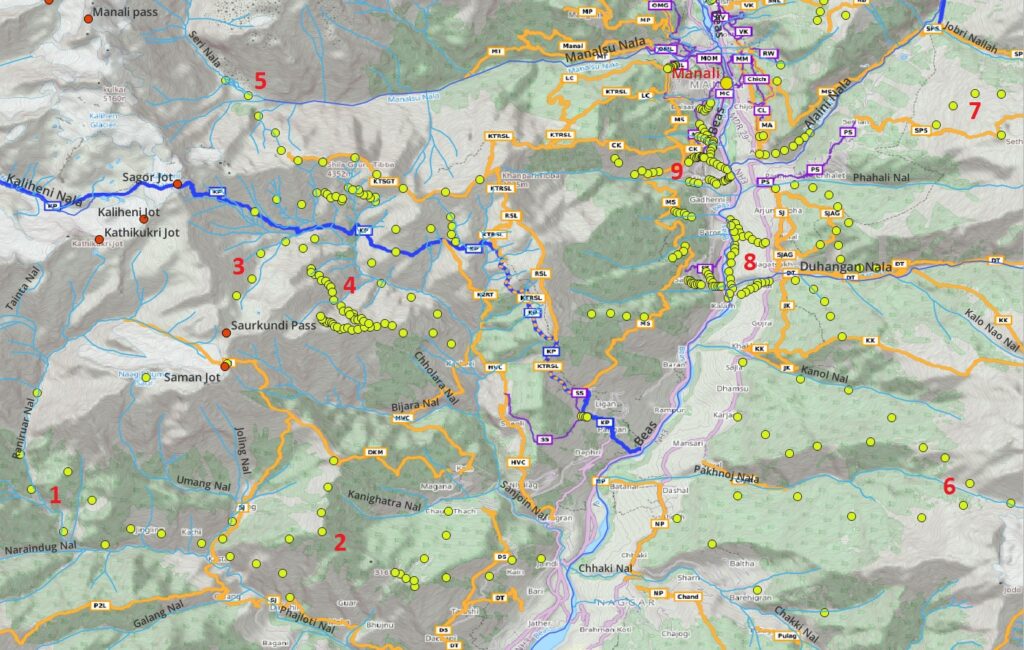
- 1 – explore the Phojal Nala river valley upstream from Salang (Survey, got stuck while descending downstream from Saman Jot)
- 2 – several ridgeline trails to base of Saman Jot / Dhumaldev ka Mandir (Survey)
- 3 – connecting Saman Jot trail to base of Sagor Jot (Kaliheni) (Survey)
- 4 – Kasheri – Sagor jot route (Survey, trails spotted on Sat map)
- 5 – descend into the upper Manalsu valley from the Kanpari Tibba-Shila Gauru Tibba ridgeline (Survey, Sat maps)
- 6 – large traverse between Pakhnoj Nala and Kanol Nala tributaries of Beas river (Survey)
- 7 – horizontal traverse around the Sethan Dome (Survey)
- 8 – paths connecting Jagathsuk with Western bank of Beas river (Sat maps)
- 9 – several paths from Beas river to Kanial village (Sat maps)
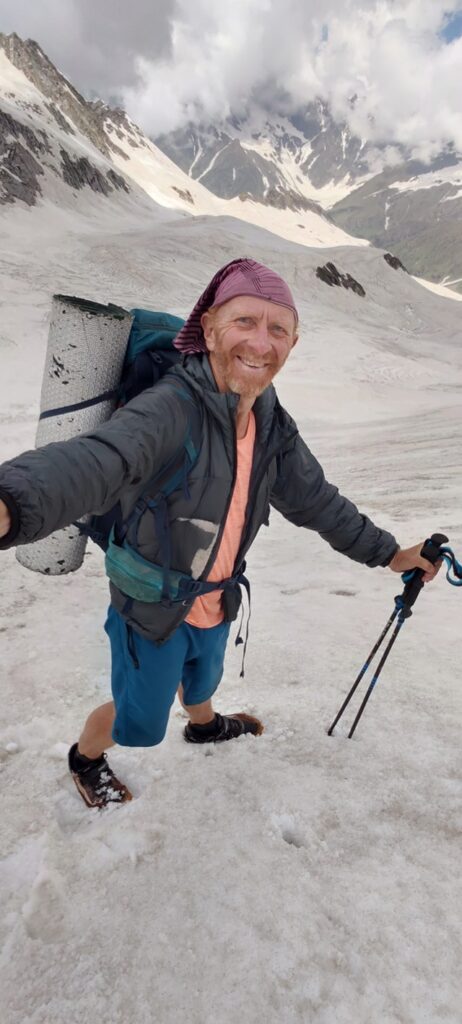
Parvathi Valley
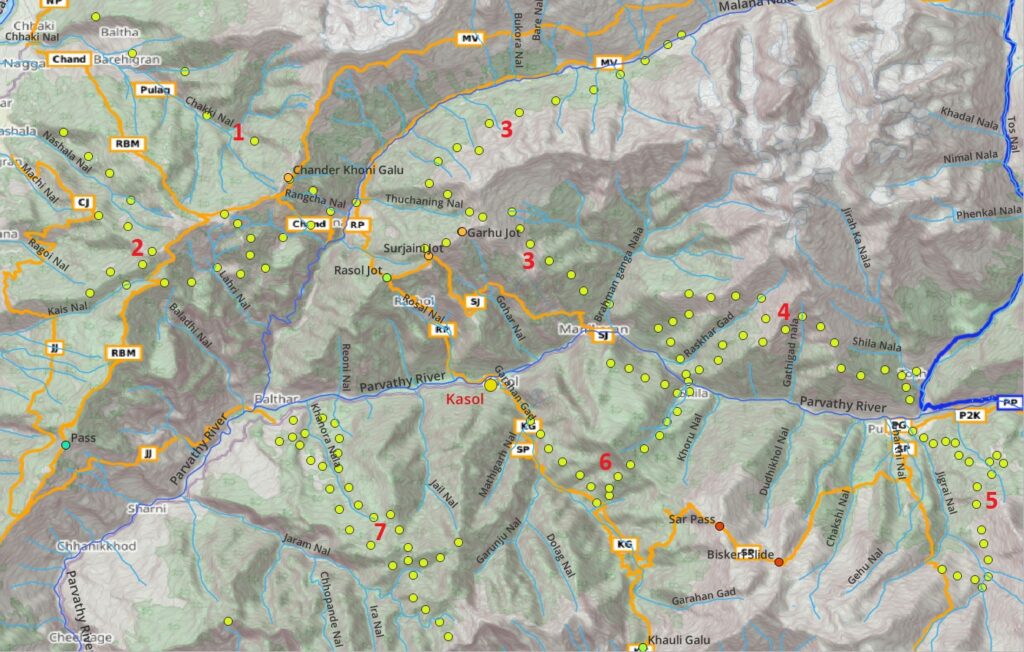
- 1 – alternate route to Chanderkhani pass along the Chakki Nal stream (Survey)
- 2 – alternate trails from Beas valley to Chanderkhani – Bijli Mahadev ridgeline (Survey)
- 3 – trail climbing up from Manikaran in Parvathi valley to a long traverse on Eastern slope of Malana Nala (Survey, Sat maps)
- 4 – traverse on upper Northern slope of Parvathi valley between Lapas and Tosh (Survey)
- 5 – trails on upper Southern slope of Parvathi valley between Kheerganga and Pulga (Survey, sat map)
- 6 – trail on upper Southern slope of Parvathi valley between Silla and Garahan (Survey)
- 7 – trail connecting Parvathi and Hurla Nal valleys through Tainti Gallu pass (Survey, confirmed by locals)
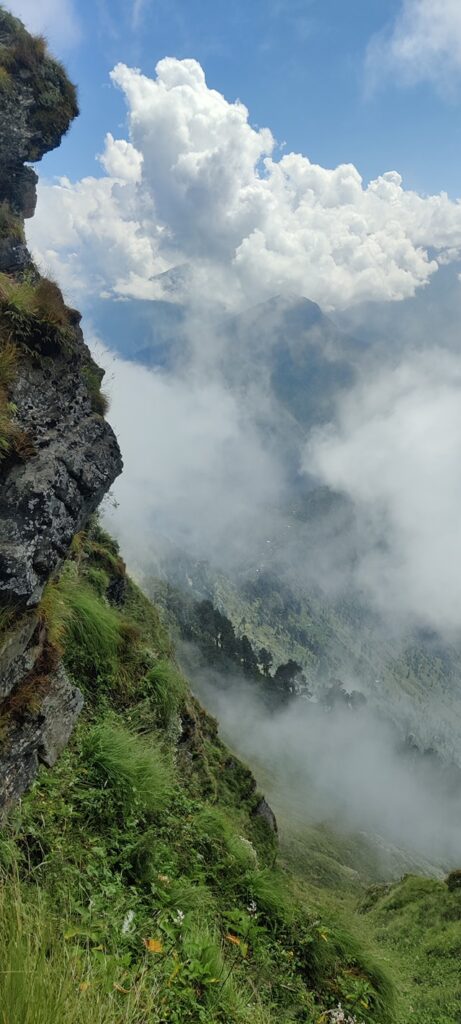
GHNP North (Jiwa Nala – Sainj)
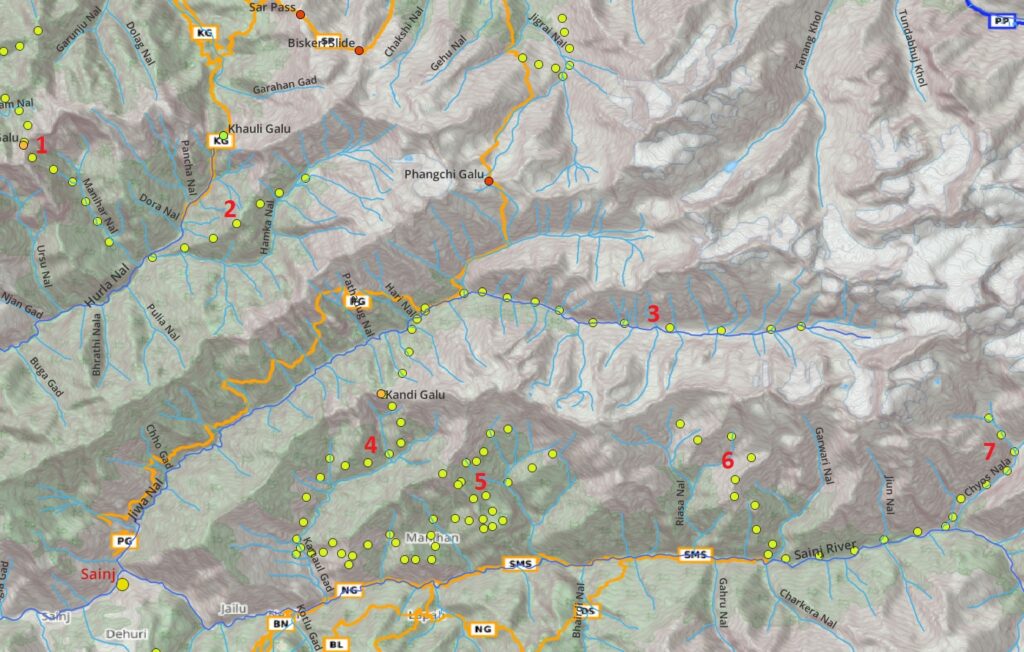
- 1 – Tainti galu pass connecting Parvathy and Hurla Nal valleys (Survey, locals)
- 2 – trail into the Hamka Nal valley tributary of Hurla Nal river (Survey)
- 3 – exploration of the upper Jiwa Nala valley (one of 3 major rivers in GHNP)
- 4 – Kandi Galu pass connecting Sainj and Jiwa Nala valleys (done in 2019)
- 5 – trails above Neuli on the upper slopes in the Sainj river valley (Survey)
- 6 – shepherd trail on upper Northern slope of Sainj river valley (Survey)
- 7 – exploration of the Chyons Nala tributary of the Sainj river (Survey, locals)
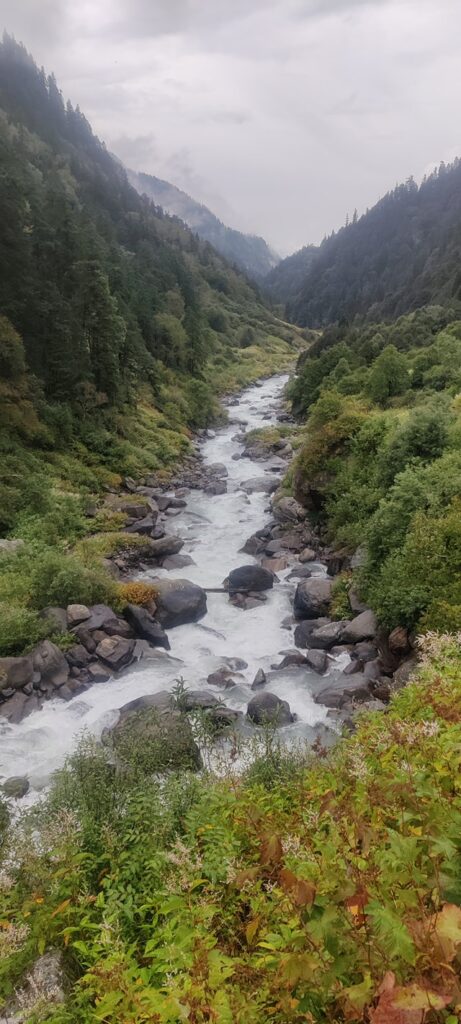
GHNP South (Sainj, Tirthan)
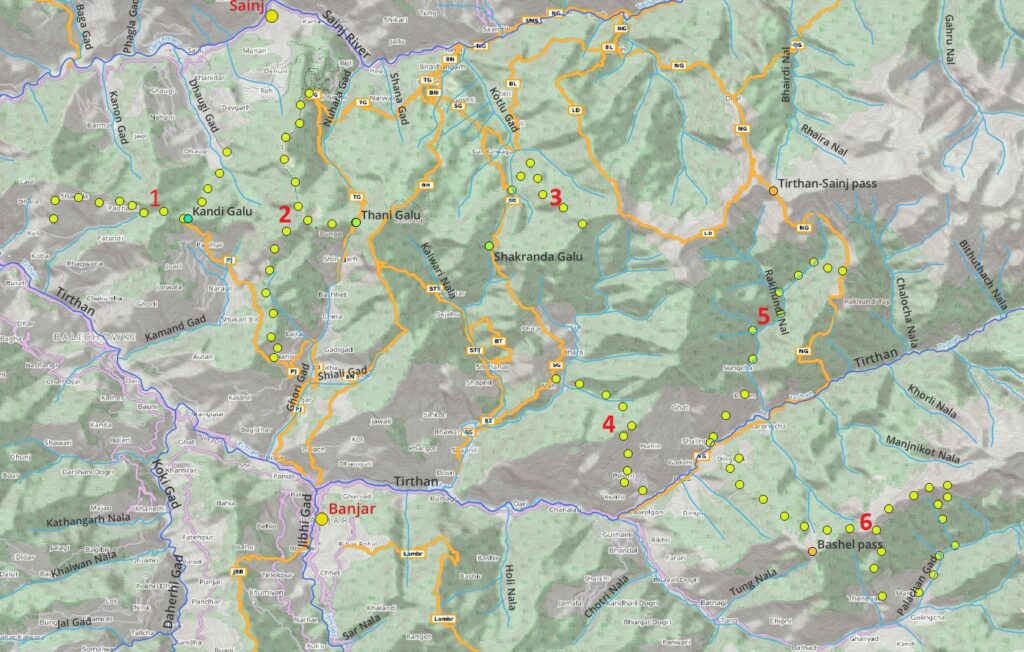
- 1 – trails to Kandi Galu pass between Sainj / Tirthan valleys (Survey)
- 2 – trails to Thani Galu pass between Sainj / Tirthan valleys (Survey)
- 3 – ridgeline trail from Kotlu Gad (Sainj valley) to top ridgeline (Survey)
- 4 – trail connecting Tirthan and Kalwari Nala valleys (Survey)
- 5 – trail along the Rakhundi Nala to the Rakhundi top (Tirthan valley, Survey)
- 6 – trail connecting Tirthan and Palachan Gad valleys (Survey, done in 2019)
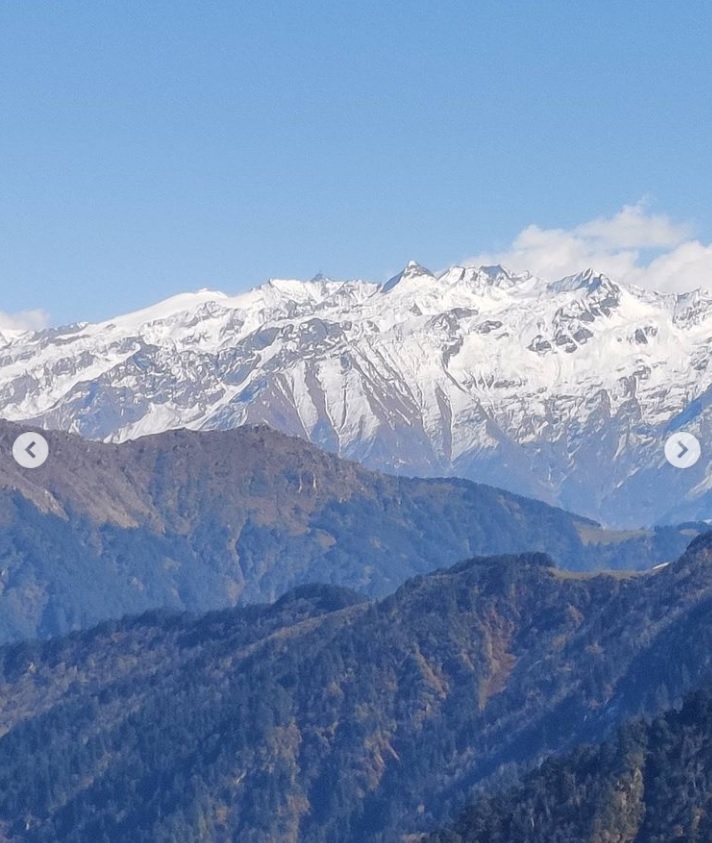
Barot-Kullu range (South of Kandi pass)
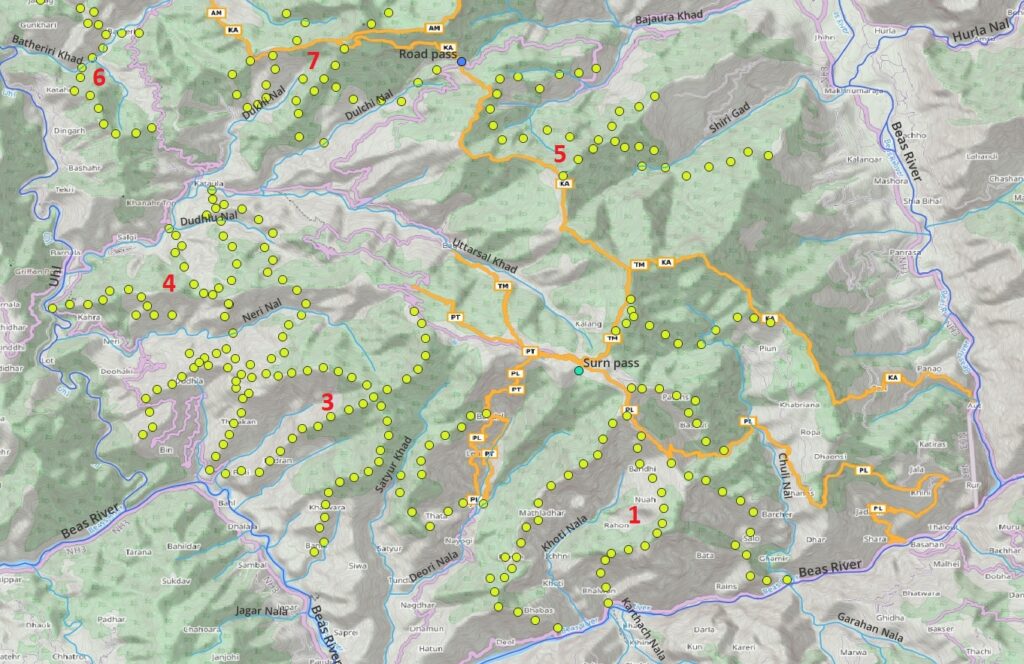
- 1 – three ridgeline trails from Beas river to the Surn pass (Survey)
- 3 – three ridgeline trails between Satyur Khad and Neri Nal valleys, tributaries of Uhl river (Barot) (Survey)
- 4 – trails connecting Neri Nal and Dudhlu Nal valleys (Survey)
- 5 – trails on upper Western slopes of Beas river valley connecting to ridgeline (Survey)
- 6 – trails in the Batheri Khad valley, tributary of Uhl river (Survey)
- 7 – trails connecting Tichi Nal (Kullu) and Dulchi Nal (Barot) valleys (Survey)

Barot-Kullu range (North of Kandi pass)
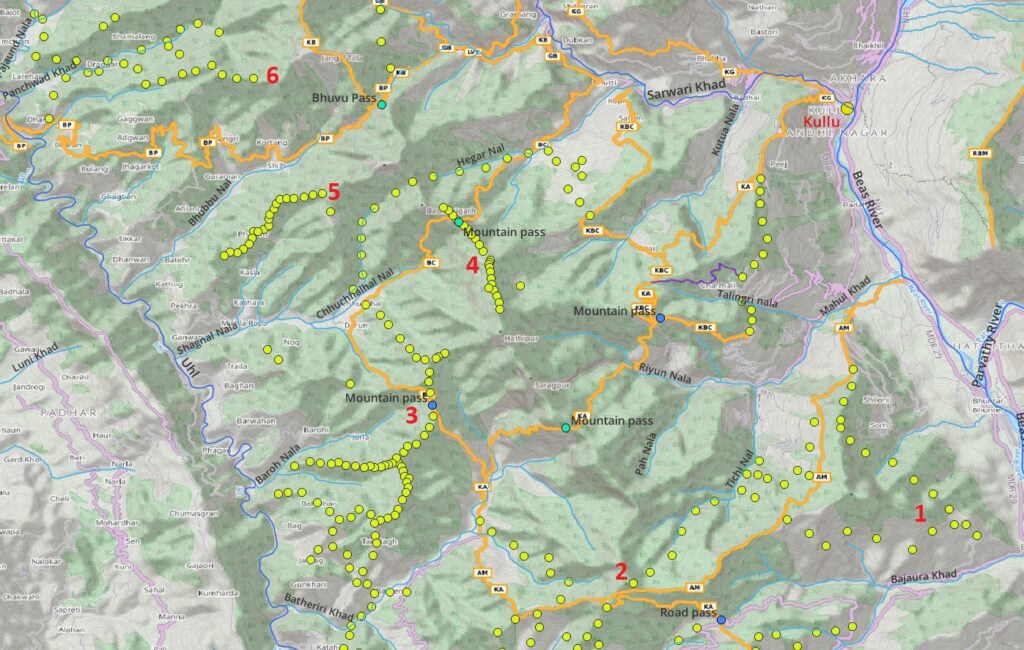
- 1 – trails climbing out of Beas river valley to ridge between Bajaura Khad and Tichi Nal valleys (Survey)
- 2 – trail connecting Tichi Nal and Dulchi Nal valleys (Survey)
- 3 – trail connecting Chhuchhalhal Nal and Batheri Khad valleys (Survey)
- 4 – ridgeline trail connecting Bashtarigarh and Hathipur peaks (Sat maps)
- 4b – trail connecting Hegar Nal and Chhuchhalhal Nal valleys (Survey)
- 5 – ridgeline trail between Chhuchhalhal Nal and Bhubbu Nal valleys (Sat maps)
- 6 – ridgeline trail between Damwangarh Khad and Bhubbu Nal valleys (Sat maps)
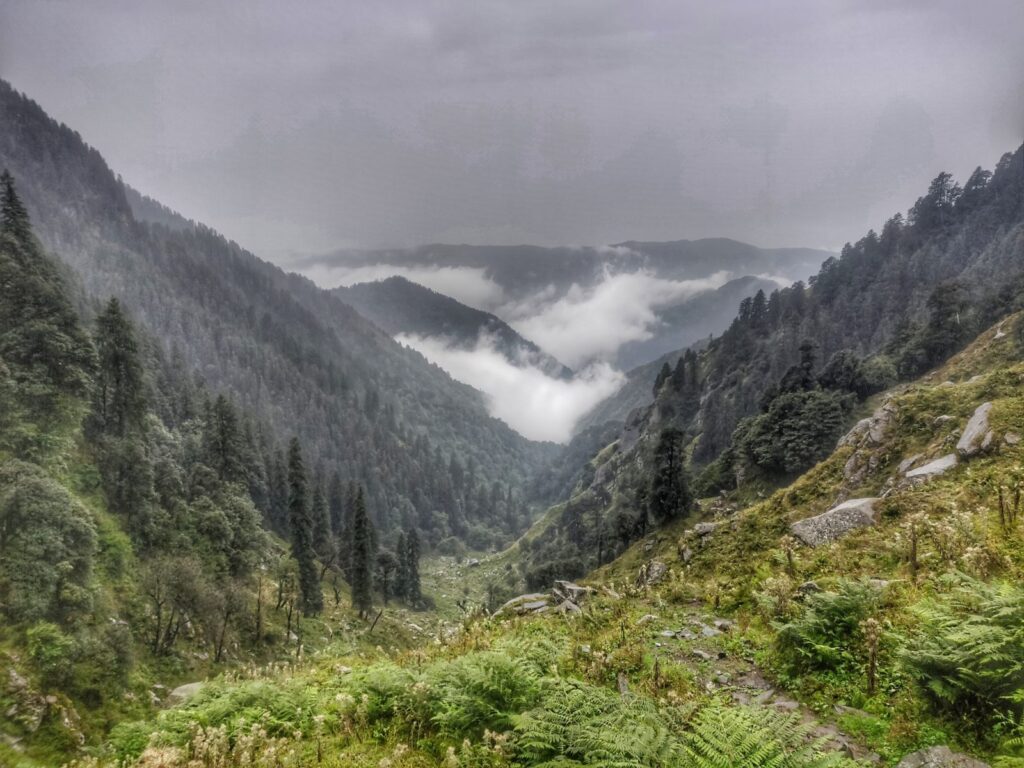
Barot-Lug Range

- 1 – trail on upper Eastern slop of Sarwari Khad (Lug valley) (Survey)
- 2 – trails towards the Bherianga pass / Ghorlatinu Nala valley (Sat maps)
- 3 – trail connecting Lambadag Nala (Barot valley) to Ghorlatinu Nala valey (Survey, Sat maps)
- 4 – trail descending from Sari pass into Lug valley (Sat map)
- 5 – ridgeline trails between Tikhali Nala and Jukhandar Nala side-streams of Barot valley (Sat map)
- 6 – trails in Pajaund Nala valley (Sat map)
- 7 – ridgeline trails to Shira ra Tibba peak (Sat maps)
- 8 – trails from Lug valley to top ridgeline near Pajaund Galu (Survey)
- 9 – trail connecting Himri pass with Mandrol Nal valley (Survey)
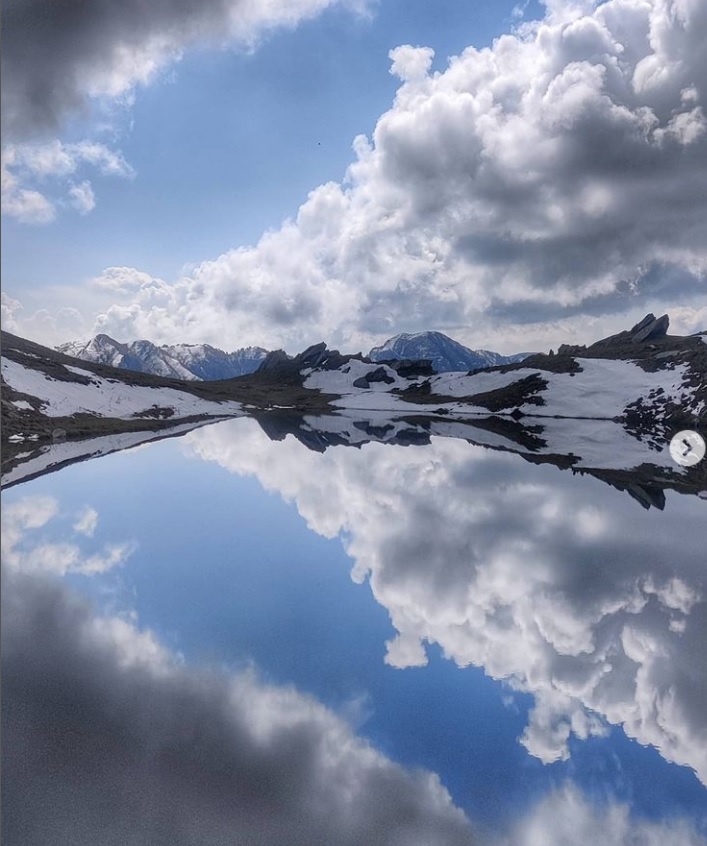
Interested to explore some of these yet unmapped routes? Download the GPX file on your phone, head out to the mountains and start contributing to the alpine outdoor community. Once explored and GPS recorded these can be mapped into Open Street Maps for the benefit of all. A Himalayan region with an extensively mapped hiking network will attract an international community of independent hikers creating a sustainable outdoor eco system.

Beautiful info…